Upper body dysfunctions are often associated with muscle imbalances. A common upper body imbalance is
We are going to discuss the muscles involved in upper crossed syndrome and what we can do to correct these problems over time. The strategies discussed can be applied to any muscle imbalance and there are muscle imbalances that reflect the opposite dysfunctions of
The exercises and mobility tools we decide to use will all become important weapons in this war for better function!
What is a muscle imbalance?
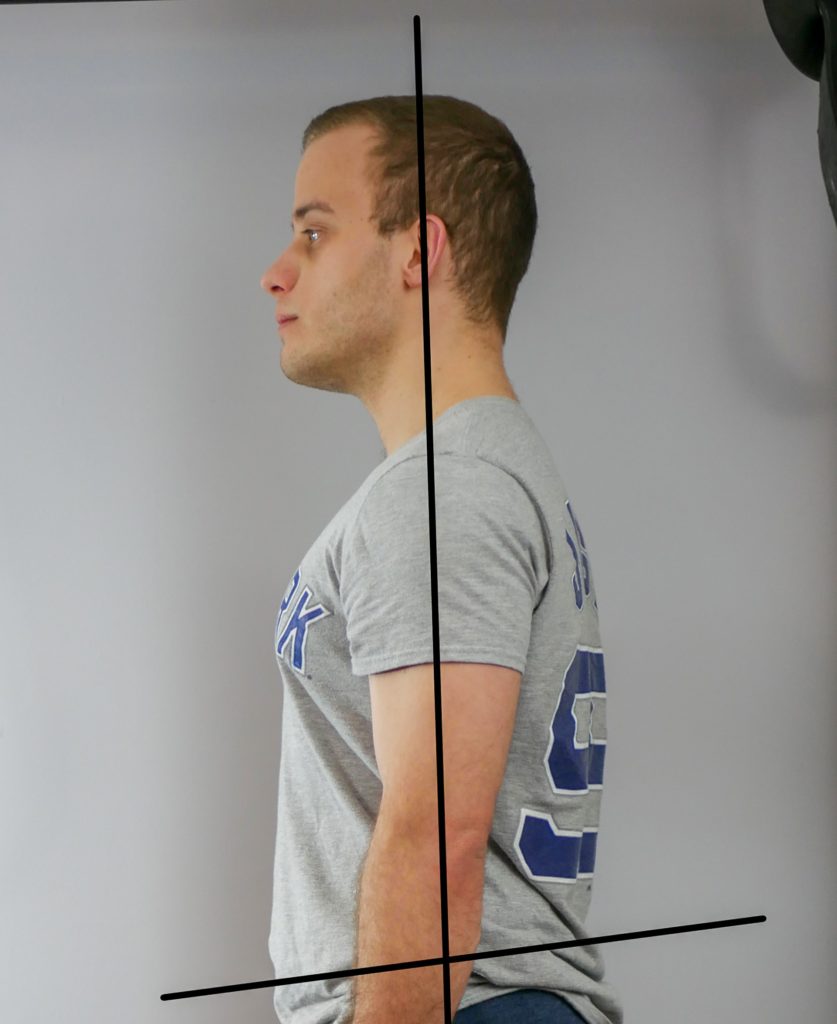
Optimal alignment 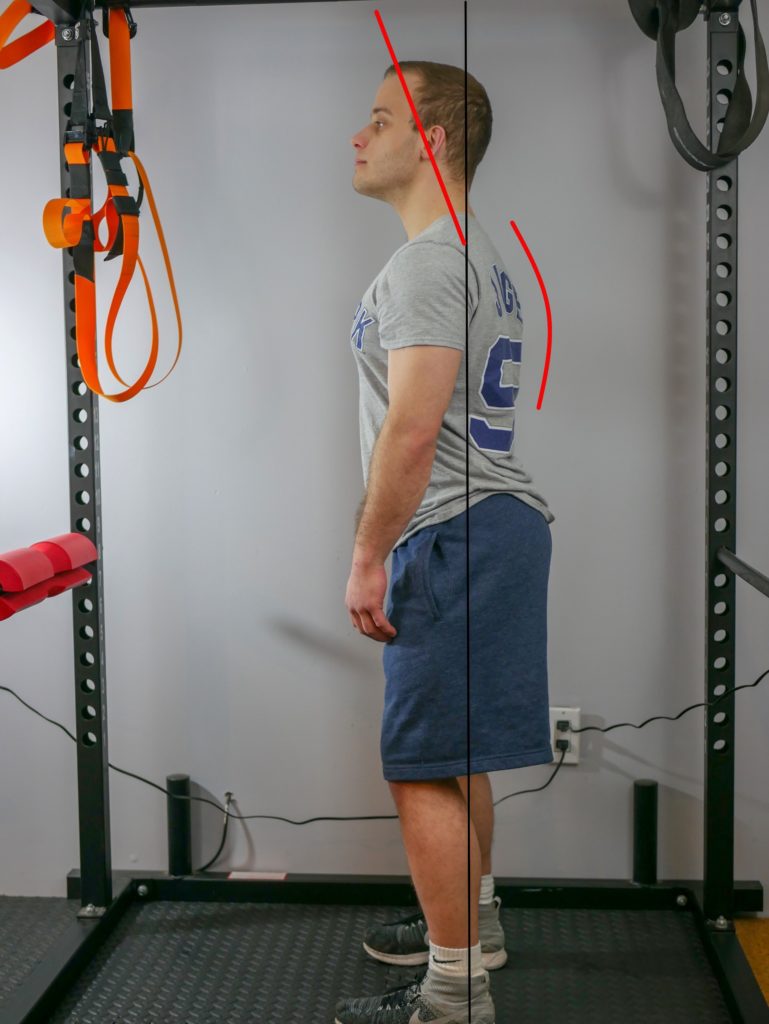
Forward weight shift, rounded shoulders, forward shifted head, rounded upper back
A muscle imbalance is when the muscles surrounding a joint stop functioning properly. Muscles operate your joints in force couples. A force couple consists of opposite muscles. A good example of a force couple is at the elbow. The biceps control elbow flexion, the triceps perform the opposite motion, elbow extension.
If one of the muscles in a force couple becomes overused and overdeveloped, the opposite tends to become weakened and the force couple will negatively affect joint function.
Desk posture, constant cell phone usage, typing, and sitting are all positions of stress that our body adapts to overtime by overdeveloping certain muscle groups to reinforce this position!

Forward shifted head, rounded shoulders, and an overall forward shifted position are all part of Upper Crossed Syndrome
How does a muscle imbalance happen?
A muscle that contributes to a problem tends to be overactive. Your brain is more likely to fire signals to an overactive muscle. You might use an overactive muscle for tasks and functions even if it’s not the preferred muscle to do so, this can also be viewed as compensation.
Generally, the more you use a muscle, the more developed it becomes. It is possible, although mounting evidence points to the contrary, that an overdeveloped muscle shortens as well. This is a vicious cycle!
The theory of addressing this problem lies in strengthening weakened neglected muscles. Part of restoring function involves addressing overused muscles with release techniques. Stretching is a possible remedy for addressing shortened muscles although the evidence for static stretching doesn’t seem consistent in showing any altered muscle length, among many
To understand a muscle imbalance we must identify the muscles that contribute TOWARDS the problem, which are often overdeveloped and shortened (but not always), and also understand there will be muscles on the opposite side that are weakened, and often (but not always) lengthened. The general approach is to massage, relax and inhibit the muscles that are contributing towards the problem (the overactive muscles), then activate and strengthen the weakened muscles on the other side.
What muscles are involved?
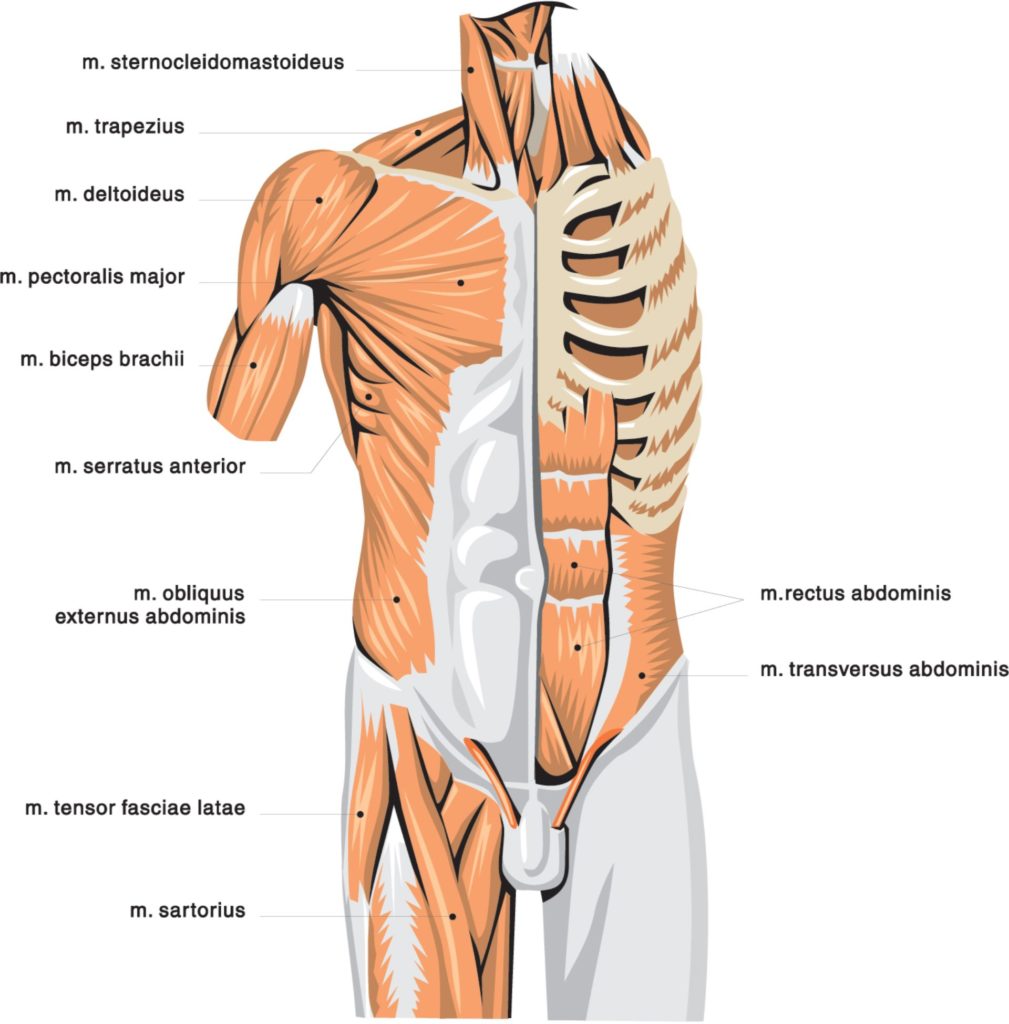
Let’s identify the overactive muscles most commonly responsible for Upper Crossed Syndrome, a common muscle imbalance. Then, let’s learn some techniques to calm them down so we can then activate and strengthen the weakened muscles on the other side.
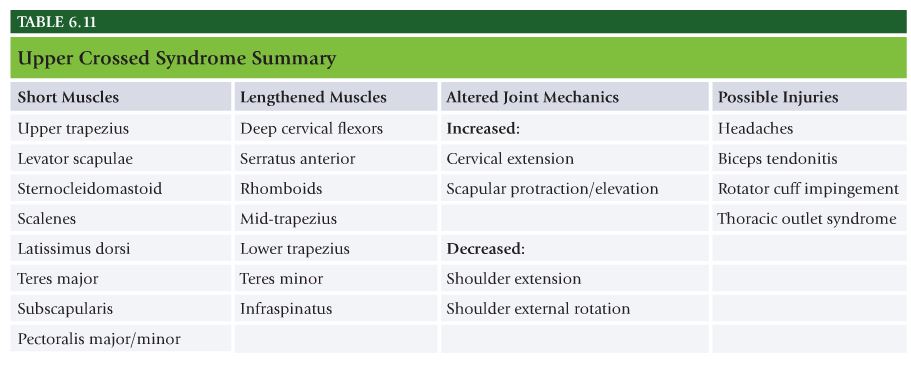
Overactive muscles in upper crossed syndrome:
Because there are so many different muscles that could be involved in upper body muscle imbalances, it can be helpful to address a few basic muscle groups that work together for simple functions. Performing a basic pushing and pulling assessment is a great way to narrow down what muscles might be dysfunctional.
Often times the pec major, pec minor and sternocleidomastoid are big culprits in upper crossed syndrome. These muscles tend to become overactive and overdeveloped, along with the lats and upper traps. All of these muscles synergize together to round your shoulders forward and internally rotate the arm.
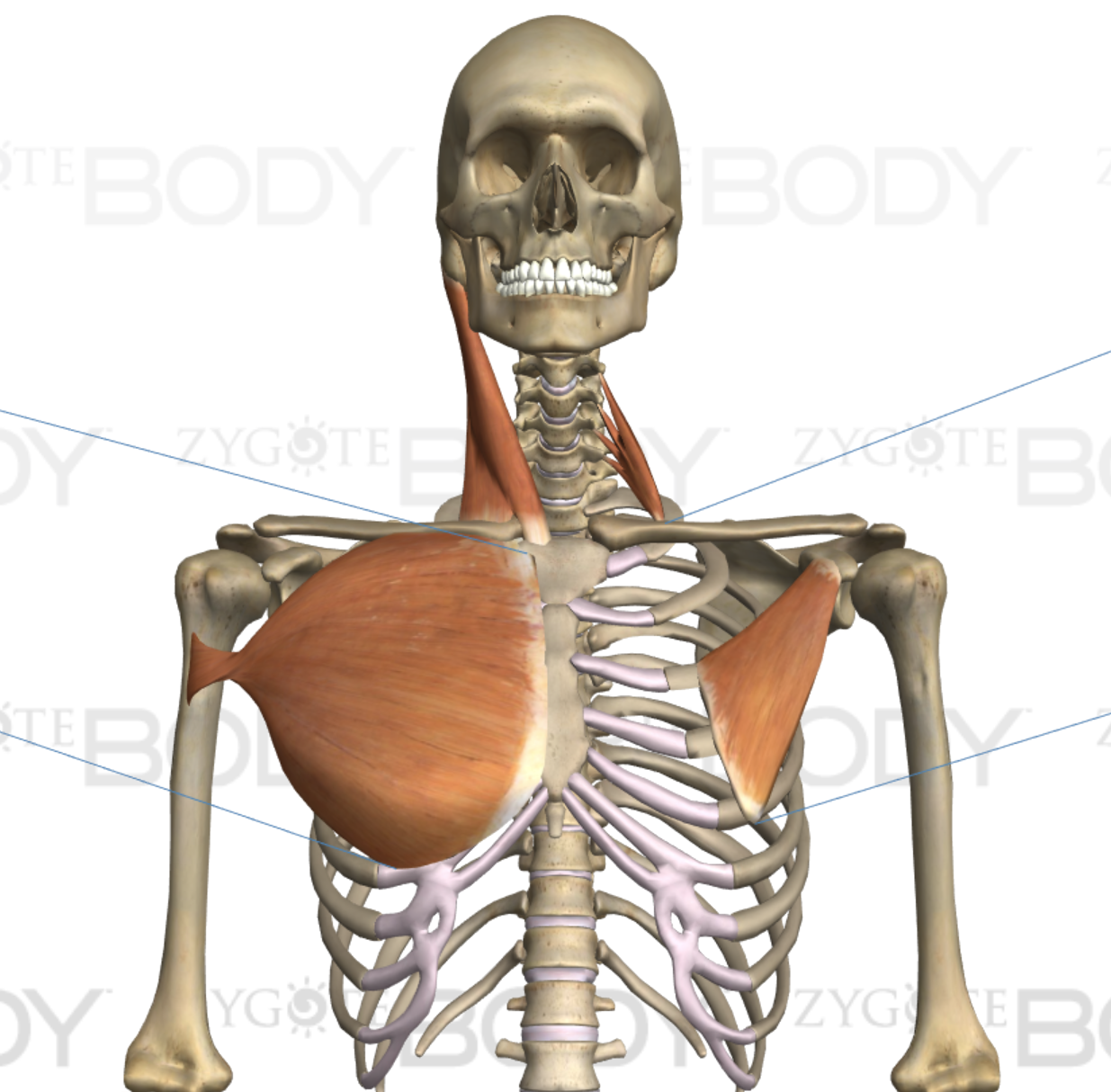
Pec muscles and Sternocleidomastoid 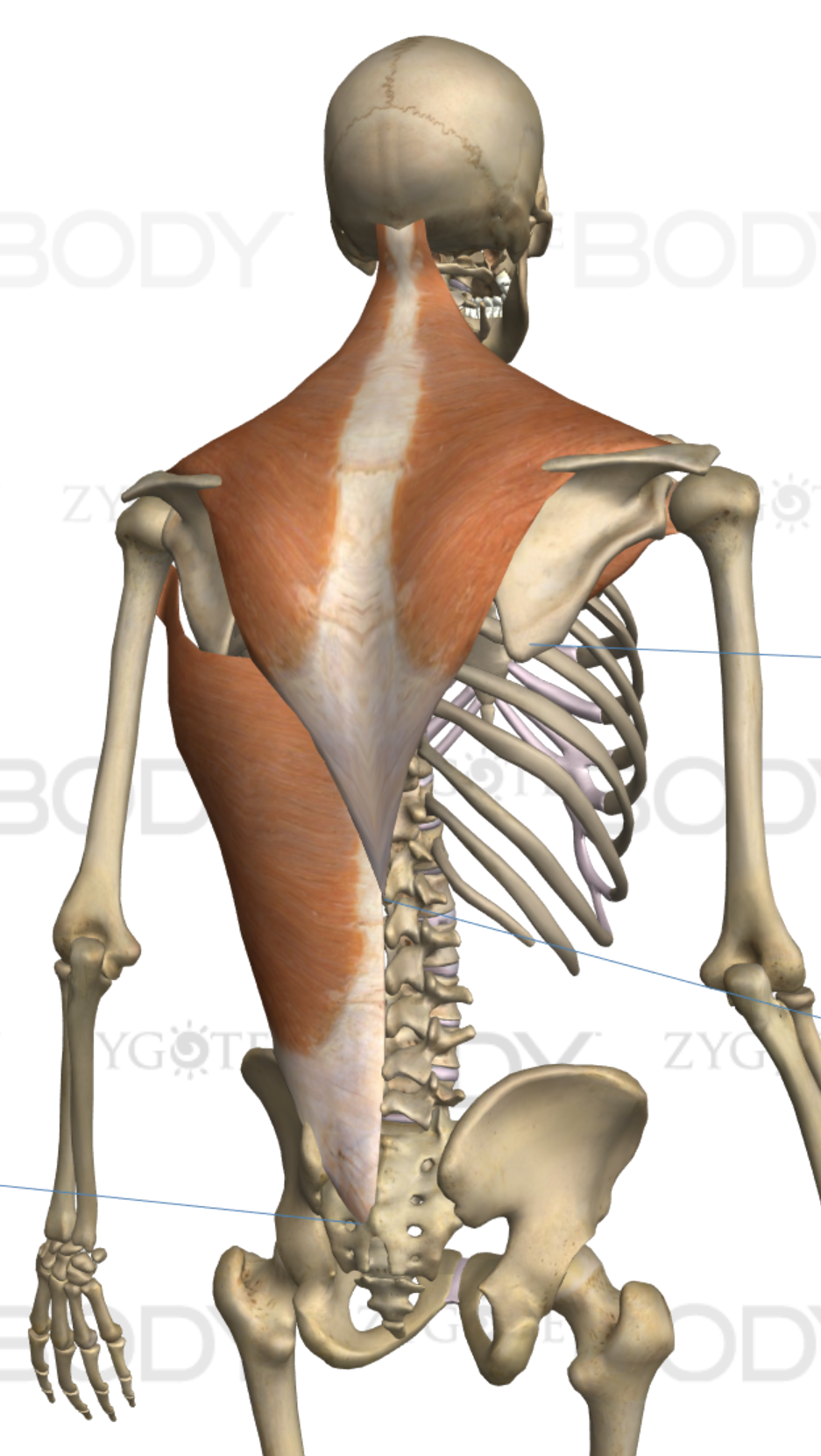
Trapezius, Latissimus Dorsi, and Subscapularis
Underactive muscles in upper crossed syndrome:
In upper crossed syndrome, the muscles that are most likely weakened and under-active are the Deep Cervical Flexors, Lower Trapezius, Serratus Anterior, Rhomboids, Mid Traps, Teres Minor, and Infraspinatus. These are all opposite muscles from the overactive group, and these muscles synergize together to maintain erect posture and pull the shoulders back and keep the head neutral.
Strengthening underactive muscles is key to correcting any muscle imbalance.
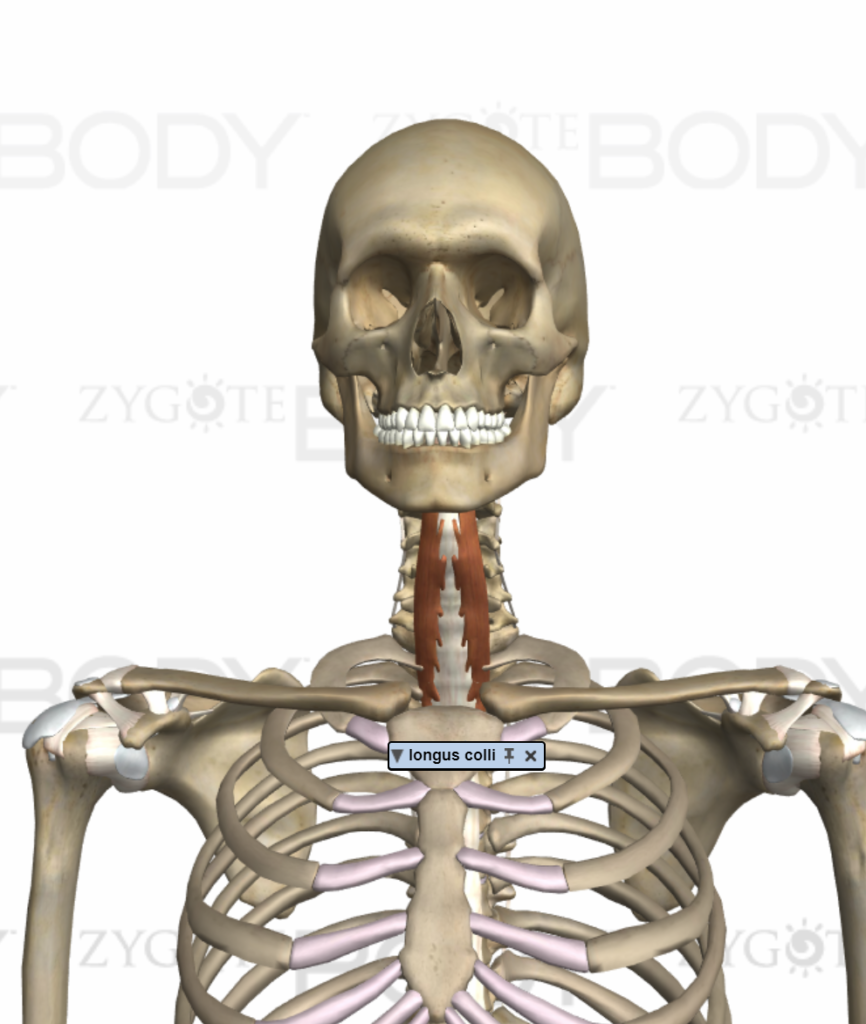
Deep cervical flexors 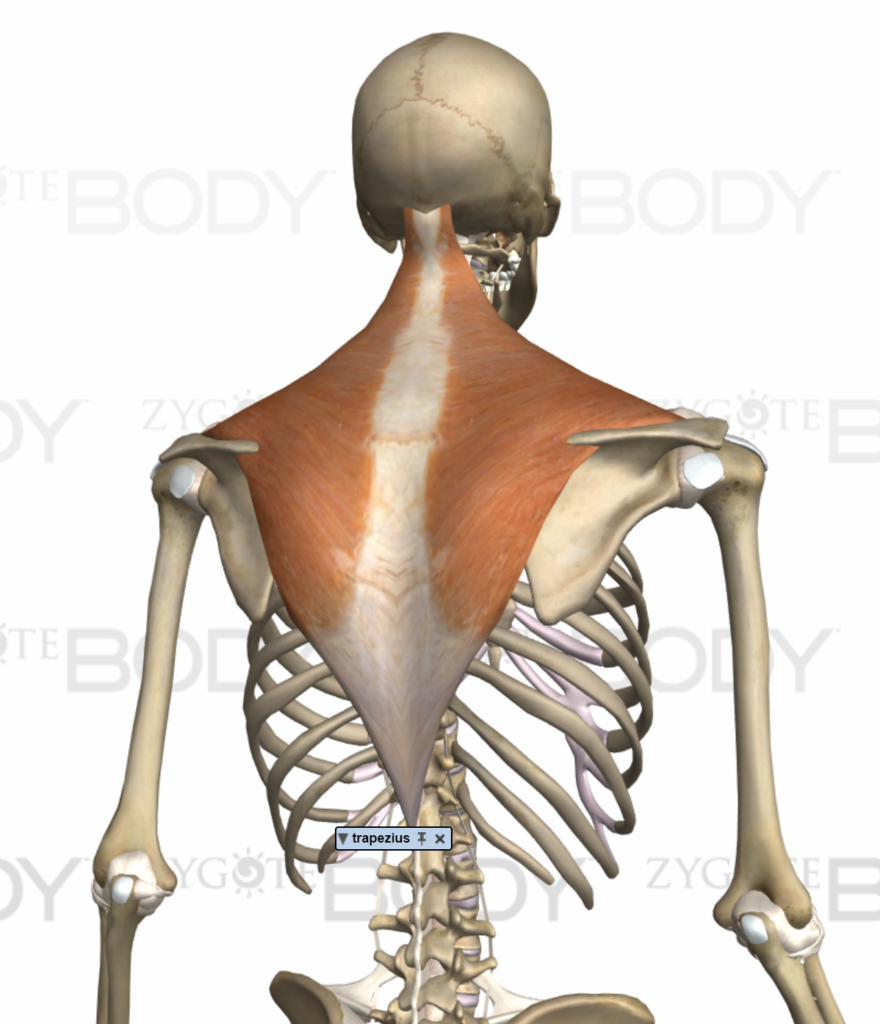
Trapezius 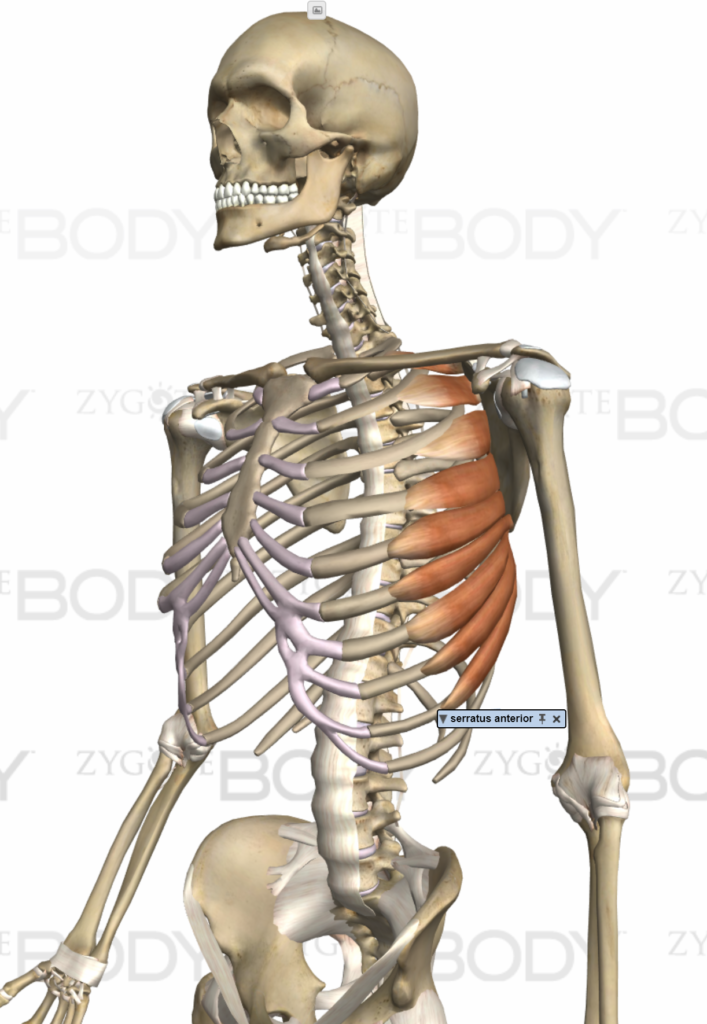
Serratus 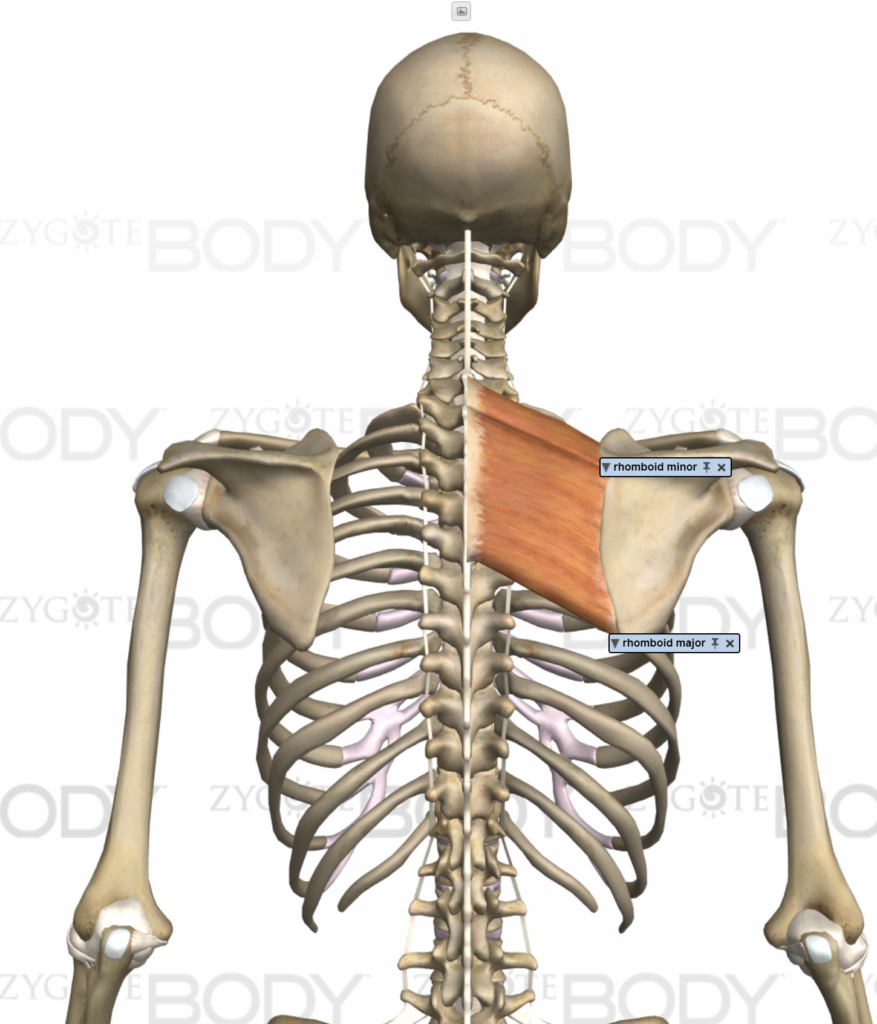
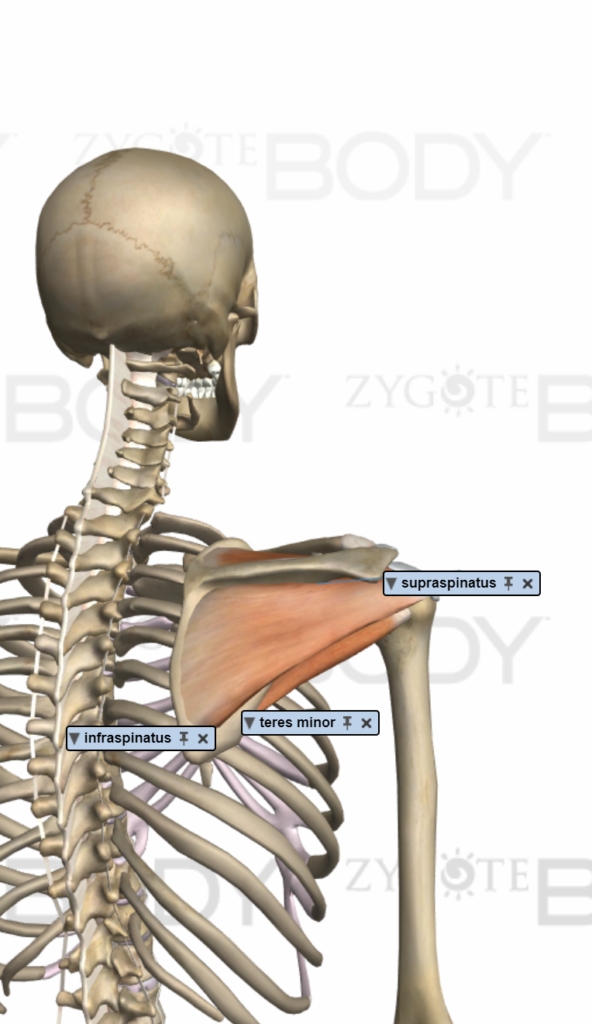
Do you have it?
it is important to be able to determine if you really have
Performing an assessment is an important step in narrowing down muscle imbalances. The standard pushing and pulling assessment is a great test to start with.
Now What?
Consult the Upper Crossed Syndrome Corrective Exercises page for techniques to begin to correct this dysfunction!
.
